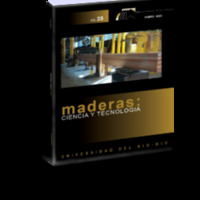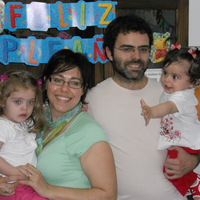
Renata Zaccone
Related Authors
Nicole Herbots
Arizona State University
David Seamon
Kansas State University
Dr. Goutam Thakur
Manipal Academy of Higher Education
R. L. Narayan
Indian Institute of Technology Delhi
Mohamad Zakaria
UPM - Universiti Putra Malaysia
Rozaida Poh Yuen Ying
University of Malaya, Malaysia
Maderas. Ciencia y Tecnologia
Universidad del Bio-bio
Martín A. Rodríguez
Universidad Nacional de San Martin
Stephen Macko
University of Virginia
Gabriella Caruso
Consiglio Nazionale delle Ricerche (CNR)









Uploads
Papers by Renata Zaccone
surveys (1993-1995, 2000-2001 and 2007) are compared in order to depict how the hygienic-sanitary conditions of this marine ecosystem have evolved over time.
Attention has been given to the abundance and distribution of the bacterial indicators of faecal pollution (faecal coliforms, enterococci and Salmonella spp.) as well as halophilic vibrios, using the culture methods conventionally indicated by current legislation in force for the sanitary control of waters designed for aquaculture productions. The
obtained results shows that the sanitary conditions of seawater samples met the criteria recommended by current legislations for shellfish farming approved areas. The low concentrations of faecal pollution indicators and of halophilic vibrios confirm the general suitability of the Gulf of Castellammare for seafood production. Nevertheless, the detection of low percentages of potentially pathogenic species of halophilic vibrios stresses the importance of extending
microbiological controls also to these emerging pathogens.
surveys (1993-1995, 2000-2001 and 2007) are compared in order to depict how the hygienic-sanitary conditions of this marine ecosystem have evolved over time.
Attention has been given to the abundance and distribution of the bacterial indicators of faecal pollution (faecal coliforms, enterococci and Salmonella spp.) as well as halophilic vibrios, using the culture methods conventionally indicated by current legislation in force for the sanitary control of waters designed for aquaculture productions. The
obtained results shows that the sanitary conditions of seawater samples met the criteria recommended by current legislations for shellfish farming approved areas. The low concentrations of faecal pollution indicators and of halophilic vibrios confirm the general suitability of the Gulf of Castellammare for seafood production. Nevertheless, the detection of low percentages of potentially pathogenic species of halophilic vibrios stresses the importance of extending
microbiological controls also to these emerging pathogens.